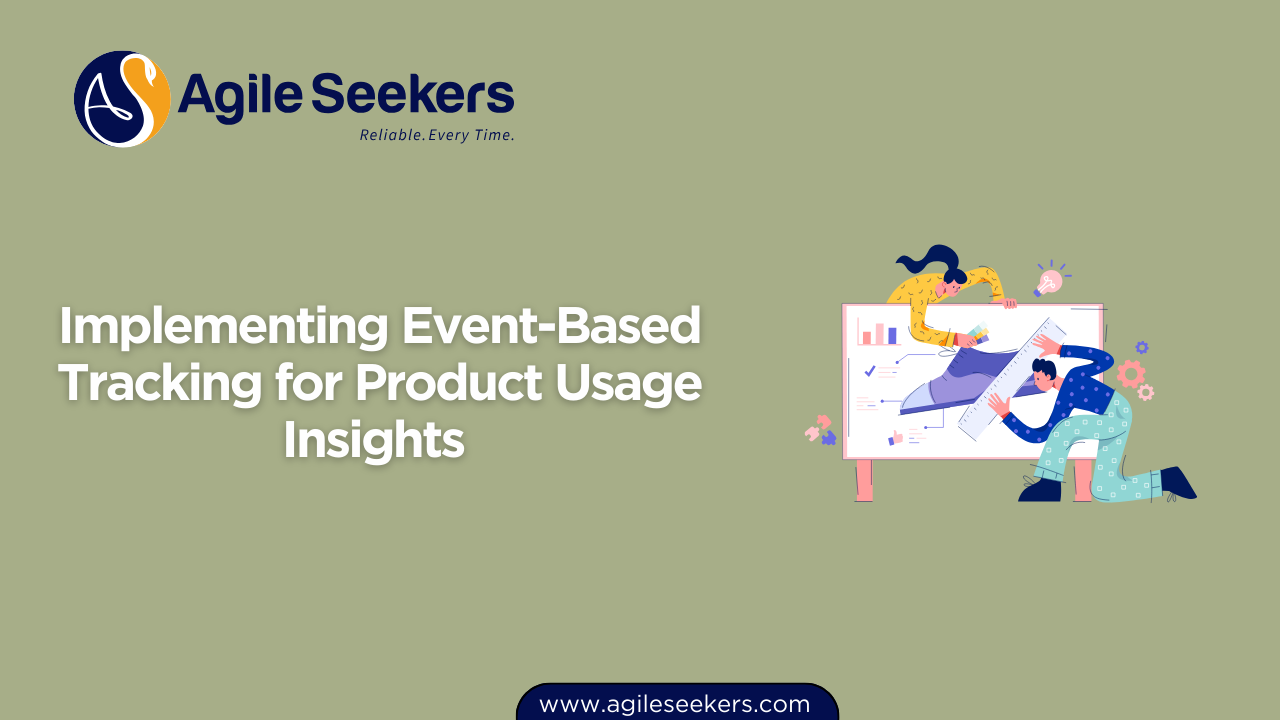Implementing Event-Based Tracking for Product Usage Insights

Understanding how users interact with your product is no longer optional. Teams need actionable insights, not just vanity metrics. That’s where event-based tracking comes in. This approach focuses on capturing user actions as they happen, giving product teams a clear picture of usage patterns, feature adoption, and friction points.
What Is Event-Based Tracking?
Event-based tracking is a method of analytics that records specific interactions within your product. These interactions, or “events,” can be anything—clicking a button, completing a form, launching a feature, or even reaching a milestone. Unlike pageview-based analytics, event-based systems are focused on behavior rather than just traffic.
Tools like Mixpanel, Amplitude, and Segment are designed around this approach, offering granular insights that support data-driven product decisions.
Why Use Event-Based Tracking?
- Feature adoption insights: Learn which features are actually being used.
- User journey mapping: Visualize the exact steps users take before conversion, drop-off, or churn.
- Segmentation: Filter behaviors by cohort, plan type, or custom attributes.
- Retention analysis: Identify whether your changes improve stickiness and repeat engagement.
Designing a Solid Tracking Plan
Before you dive into implementation, start with a tracking plan. This document defines what to track, how to name events, what properties to include, and where events should be fired.
1. Define Your Goals
Start with the business outcomes you want to impact. Are you trying to increase feature usage, boost retention, or improve onboarding? Once goals are set, reverse-engineer what events will help measure progress.
2. Identify Core Events
Focus on meaningful user actions that align with your product goals. For example:
- “Clicked ‘Upgrade Plan’”
- “Completed Onboarding Flow”
- “Exported Report”
Each of these actions tells a story about how users engage with your product.
3. Standardize Naming Conventions
Use consistent, human-readable names for events. Prefer PascalCase or snake_case to ensure readability across tools. Example:
{
event: "SignedUp",
properties: {
plan: "Pro",
referrer: "Google Ads"
}
}4. Map Events to Product Flows
Use tools like Miro or Lucidchart to map product flows and define where events should be captured. Include both front-end and back-end actions as needed. Document your event schema in a central repository.
Implementing Event-Based Tracking
Client-Side vs. Server-Side Tracking
Client-side tracking uses browser scripts (like JavaScript SDKs) to capture interactions, while server-side tracking logs events on your backend systems. A balanced approach often includes both.
For example:
- Client-side: “Clicked Download PDF”
- Server-side: “Payment Processed”
Using a CDP for Scalability
Implementing a Customer Data Platform (CDP) like Segment helps centralize tracking across multiple tools. You write events once and send them to various analytics, CRM, and messaging platforms without duplicating effort.
QA and Validation
Before going live, validate each event using browser dev tools or platforms like Segment’s Debugger. Verify payloads, naming, and property consistency. Automation tools such as Iteratively and RudderStack can support this process.
Analyzing Product Usage
Once data is flowing, analytics platforms can help uncover usage patterns. Use tools like Mixpanel or Amplitude to create funnels, retention curves, and cohort reports. For example:
- Funnel: “Visited Dashboard” → “Created First Report” → “Upgraded Plan”
- Retention: Weekly return rate after onboarding completion
Best Practices for Event Tracking
- Keep your event taxonomy lean and purposeful.
- Avoid tracking every interaction—focus on high-value signals.
- Document all events, properties, and use cases in a shared format like Google Sheets or Notion.
- Review your tracking plan quarterly to align with product updates.
Use Case: Improving Onboarding Flow
Let’s say your goal is to reduce drop-off during onboarding. With event tracking, you can identify which step causes users to abandon the process. For example, you notice a high exit rate on the “Add Payment Info” screen. With this insight, you experiment with deferring the payment step, and conversion improves by 20%.
Event Tracking and Product Roles
Product Owners and Product Managers often rely on this data to guide decisions. That’s why building a strong foundation in data analysis and Agile practices is key. Professionals looking to deepen their product skills should consider SAFe POPM Certification. It covers backlog prioritization, Agile delivery, and stakeholder management—all areas enhanced by data insights.
Similarly, teams running large-scale projects with multiple stakeholders need clear metrics and structured planning. This is where a PMP certification adds value, especially for aligning metrics to broader business goals.
Tools to Consider
| Tool | Purpose |
|---|---|
| Mixpanel | Advanced product analytics and user funnels |
| Amplitude | Behavioral analytics and cohort retention |
| Segment | Customer data pipeline for event management |
| Heap | Auto-captures events with minimal setup |
Conclusion
Event-based tracking transforms raw user actions into product intelligence. It supports better prioritization, validates feature decisions, and helps uncover what’s really happening in your product. With a well-structured tracking plan and the right tools in place, product teams can stop guessing and start knowing.
For professionals seeking to upskill in aligning metrics with delivery goals, programs like SAFe Product Owner Certification and Project Management Professional certification provide the frameworks to do just that—through structured learning and practical application.
Also read - Building and Managing a Product Analytics Stack
Also see - Using Cohort Analysis to Inform Retention Strategies




















